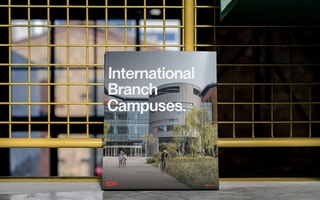Campuses that connect the world
Across the world, the landscape of higher education is shifting. Stricter visa rules in some countries and greater mobility in others are reshaping the choices students make about where and how they study.

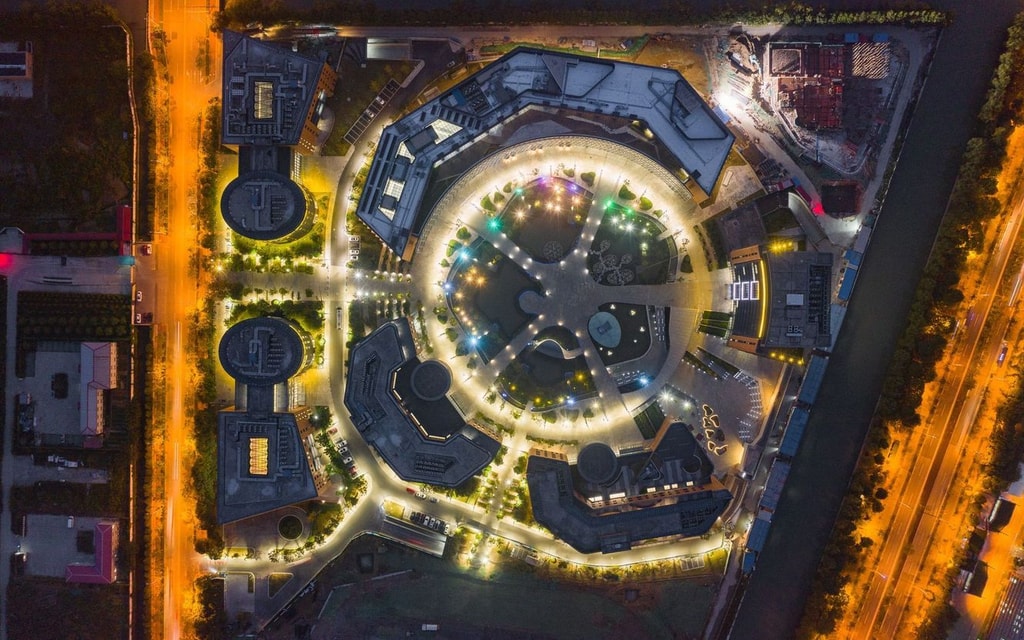
Xi'an Jiaotong Liverpool University, Suzhou Campus
As governments tighten immigration routes for graduates, more universities are looking beyond their home borders to reach students who might once have travelled abroad for a degree. For many, that means creating International Branch Campuses — dynamic global outposts that deliver the same academic excellence and student experience as their home institution, while remaining rooted in the culture and context of their host city.
This movement towards transnational education is not new, but its pace and ambition are accelerating. For UK universities, international campuses are becoming a strategic response to global demand and national policy change. The challenge is complex: how can a university maintain its academic DNA, nurture inclusivity, and remain commercially viable, all while designing spaces that are flexible enough to evolve as education itself transforms?
The key to a truly international campus is to ground it in authenticity, adaptability, inclusivity and belonging. Its design evolves from a deep understanding of the cultural, social and environmental context, ensuring that local character informs every aspect of the built environment.
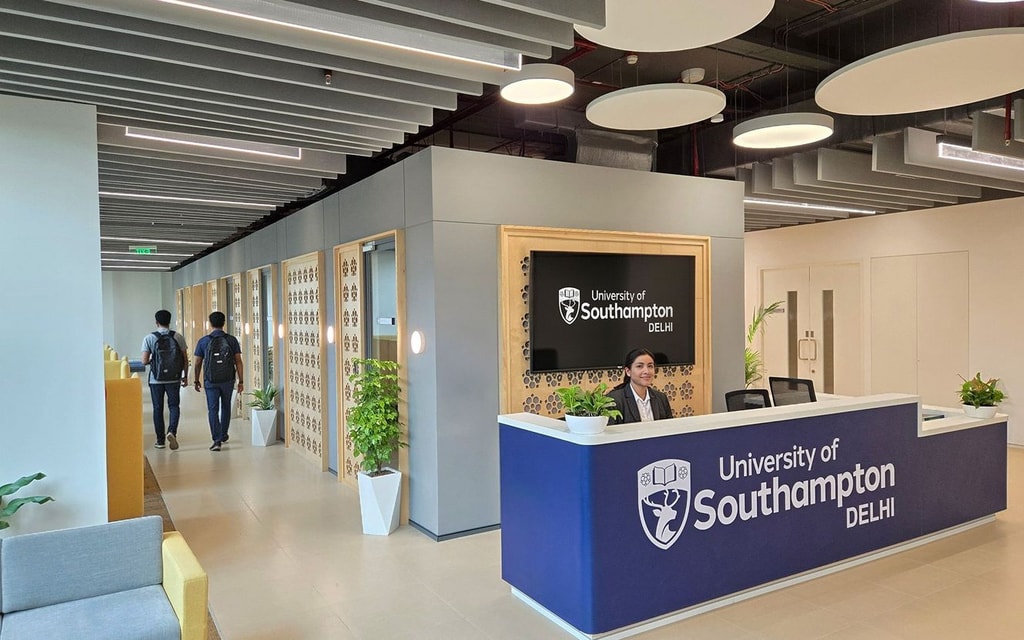
University of Southampton, New Delhi Campus
When we designed the University of Southampton’s new campus in Delhi, we worked closely with both local and UK teams to translate Southampton’s academic values into a setting that felt distinctly Indian. The architecture reflects the vibrancy of Delhi’s business district while incorporating the university’s visual language and learning culture. Students walk into a space that unmistakably feels like part of the University of Southampton, but with a touch of Delhi that grounds it in its local context. Students and staff should feel connected to the institution’s heritage and global community, but equally proud of the unique campus they inhabit. Achieving that balance is what transforms an international branch from a satellite into a genuine part of a global academic network.
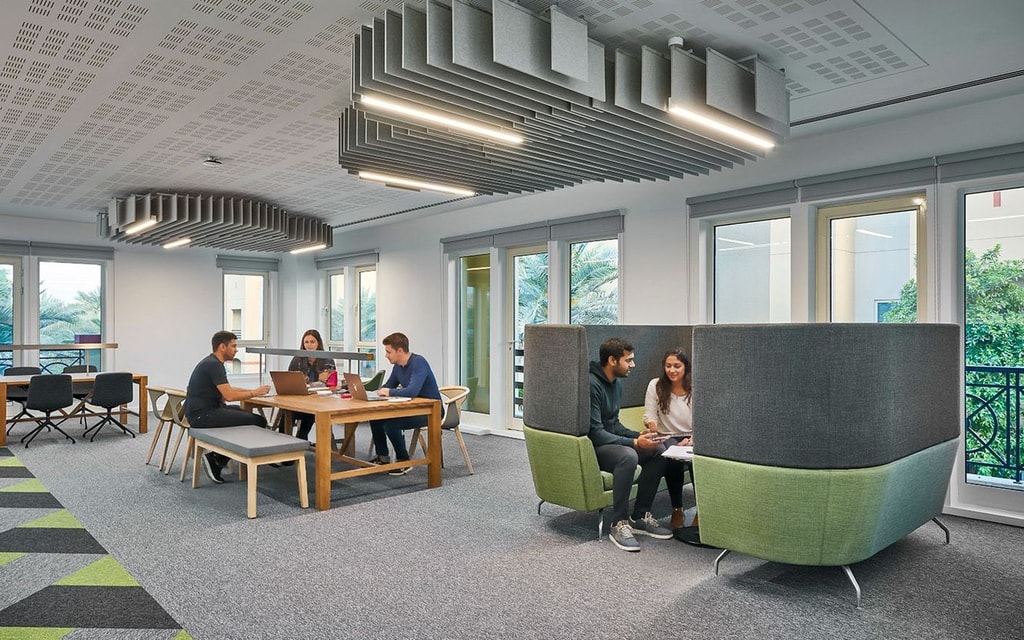
University of Birmingham, Dubai Campus
A similar design philosophy underpinned our work for the University of Birmingham’s new incubator campus in Dubai. Located within the sprawling Dubai International Academic City which is home to students from 149 different nationalities, the development provides a vibrant, flexible learning environment. Spread across two floors, the campus includes a two-storey reception area, 180-seat lecture theatre, laboratories, seminar rooms, and computer suites. Every teaching and learning space is digitally enabled, with conferencing technology that links directly to the Birmingham campus in the UK. Achieving a consistent ‘look and feel’ was a critical part of the design intent, ensuring that students in Dubai experience the same academic atmosphere and quality of environment as their peers in Edgbaston. The result is a connected, globally aligned campus that embodies the university’s identity while reflecting the energy and diversity of its international setting.
For many institutions, establishing an international campus is a phased journey. They may start small, with a leased building or shared facility, before scaling up to a permanent home as student numbers and partnerships grow. Repurposing existing buildings, particularly office towers, offers a pragmatic and sustainable way to create these early-stage campuses. We’ve helped several universities, including Heriot-Watt and the University of Southampton, to transform commercial buildings into vertical campuses that deliver a full university experience within a compact footprint.
Office-to-campus conversions demand ingenuity. Education buildings are typically occupied far more intensively than workplaces, so systems, circulation and social spaces must be reimagined. But the benefits are clear: speed to market, lower capital outlay, and the flexibility to expand as the campus becomes established. It’s a model that supports commercial viability without compromising quality or ambition.
Heriot-Watt University, Dubai Campus
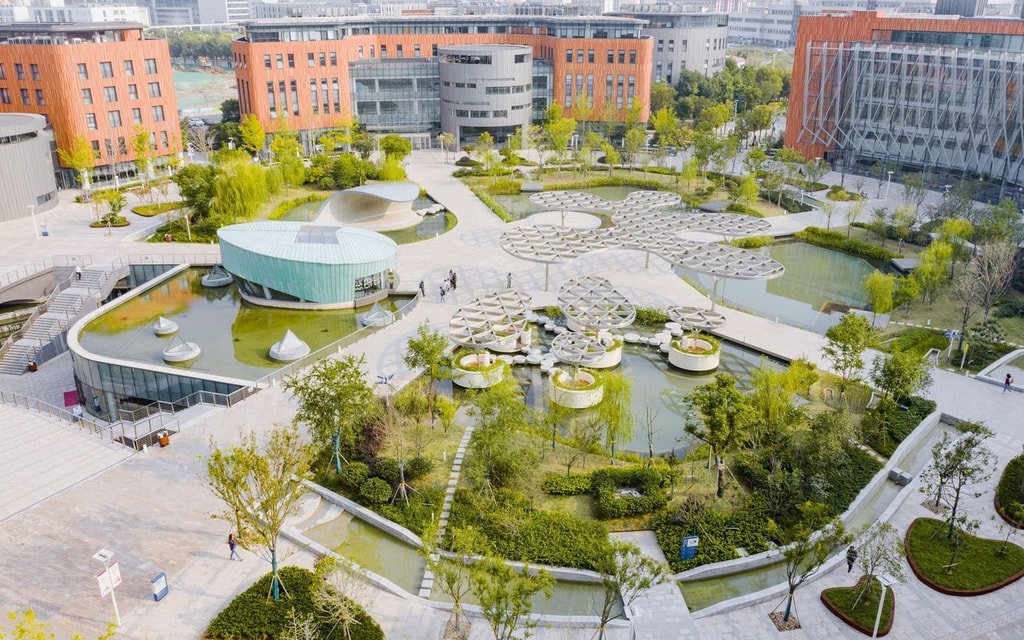
Xi'an Jiaotong Liverpool University, Suzhou Campus
Looking at the issue more holistically, international campuses are microcosms of a global society. Their student populations bring together people from different nationalities, backgrounds and lived experiences, often studying in a second or third language. The design of these environments must actively promote inclusivity and wellbeing. That means embedding universal design principles from the outset, really thinking about the diversity of a building’s users — of a campus’ people. That means creating spaces that are accessible, intuitive and equitable. But inclusion also means reflecting cultural diversity in tangible ways: through art, landscape, food and informal spaces that encourage connection and community. At the Xi’an Jiaotong-Liverpool University campus, we helped shape learning and social environments that celebrate both British and Chinese academic traditions, creating a collaborative culture that bridges East and West.
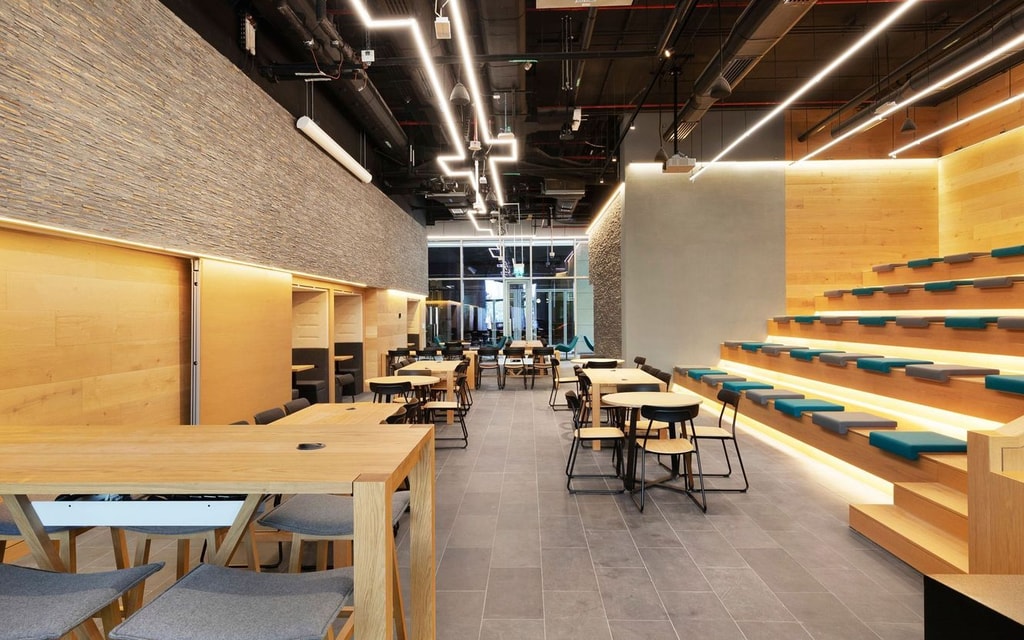
Heriot-Watt University, Dubai Campus
As higher education becomes increasingly interdisciplinary, campuses must act as platforms for collaboration between academia, industry and local enterprise. International branch campuses are often catalysts for innovation districts, connecting global research with regional economies. Our campus masterplans support this by designing frameworks that blur the boundaries between teaching, research, business and community. Flexible shared spaces replace single-use buildings, and digital connectivity ensures that students and researchers can collaborate across borders in real time. This long-life, loose-fit approach allows universities to adapt as pedagogy evolves and partnerships deepen.
International branch campuses embody a new model of global education. They are places where universities can deliver their mission internationally, support access and inclusion for students who may not be able to travel abroad, and strengthen cultural exchange through design that celebrates both global identity and local character.
As we move towards a net zero future, reusing existing buildings and embedding low-carbon design principles will be essential. But so too will be designing for people: creating spaces that inspire curiosity, support wellbeing, and connect learners to a global community of knowledge. The success of an international branch campus is not measured by its architecture alone, but by the opportunities it creates — for students, for cities and for society.
